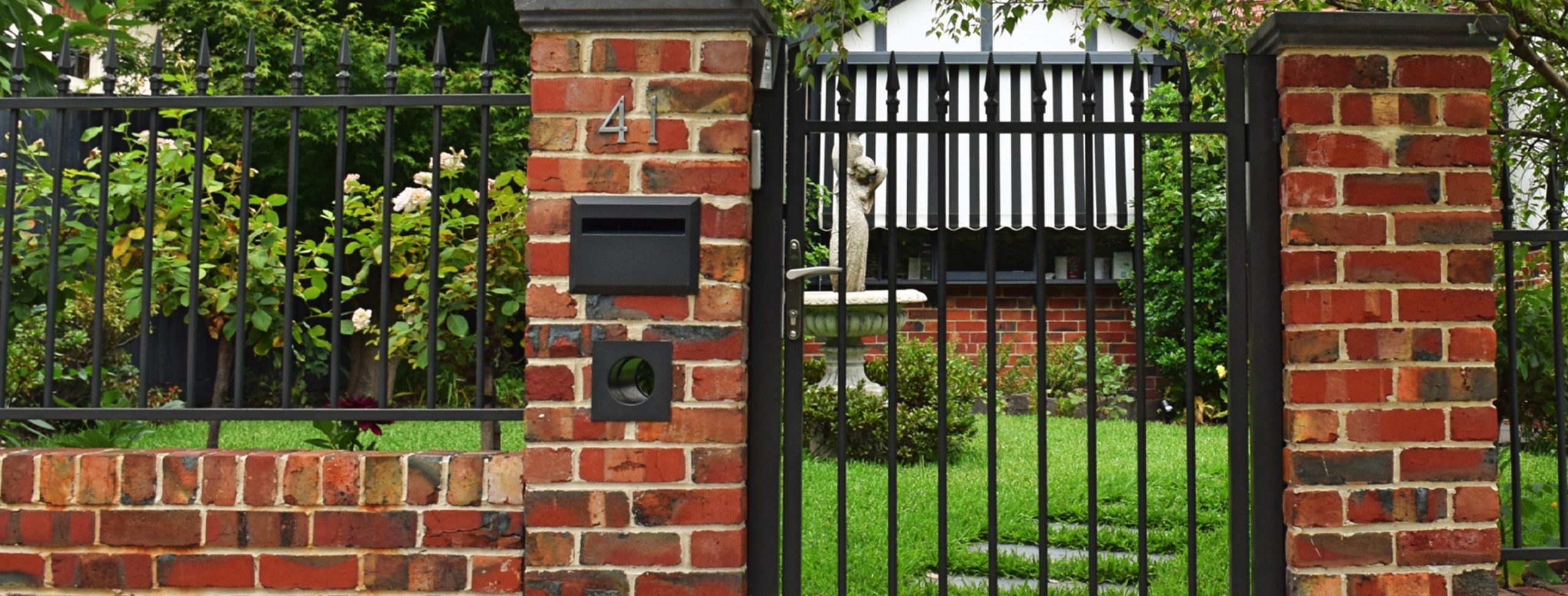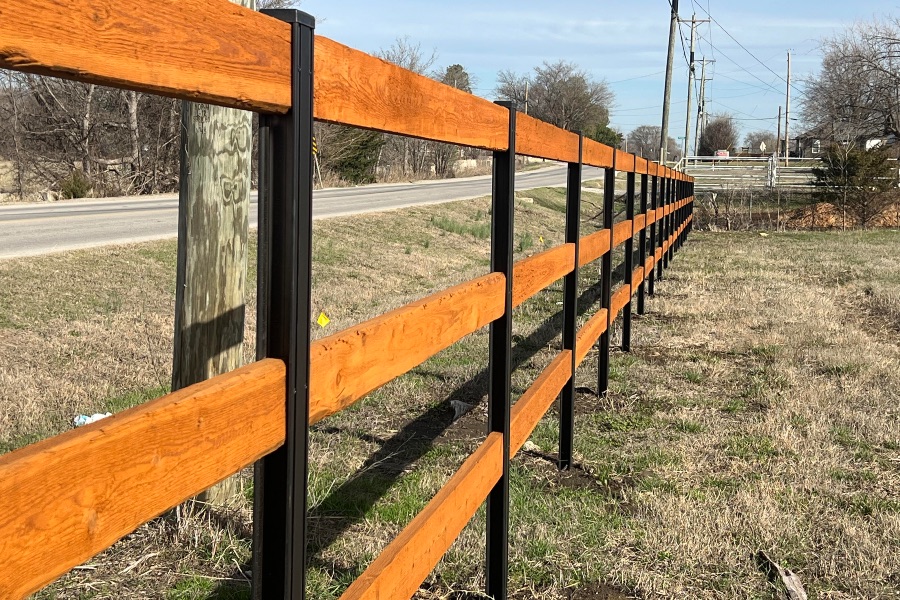All Categories
Featured
Picking the right type of fencing for your building is a decision that needs thoughtful consideration of several factors, from the product and style to its purpose and maintenance requirements. A fence not just serves useful functions such as safety and personal privacy but can likewise enhance the visual charm of your home. With a range of materials offered, it's crucial to understand what works best for your particular requirements.
![]()
Privacy: If your objective is to shut out the view from passersby or neighbors, you'll want a solid fencing without voids. Materials like wood, compound, and plastic are popular choices for personal privacy fencings. They provide the essential protection to make certain a remote yard or garden area. Safety and security: For keeping burglars out or safeguarding children and pets, you'll need a strong, high fencing. Steel fencings such as steel, chain, or light weight aluminum web link offer excellent resilience and are challenging to climb up. These products are likewise optimal for producing a protected boundary around your residential or commercial property. Visual Charm: If the objective of your fence is extra ornamental than useful, you may select a picket fencing, wrought iron, or a split rail fence. These alternatives provide an eye-catching limit without supplying full privacy. 2. Consider Your Budget. Your budget plan will play a crucial role in your decision. Different products featured differing rate points, so it is necessary to consider how much you want to invest. Here are some basic guidelines:
Timber Secure Fencing: One of the most cost-efficient choices, wood fencings can be tailored and mounted easily, though they require upkeep to avoid rot and warping. Routine staining or paint is required to maintain its appearance and toughness. Vinyl Fencing: While plastic is extra expensive in advance than wood, it's a low-maintenance option. Vinyl fencings don't call for painting, staining, or sealing, and they are immune to degeneration, fading, and pests. They can be vulnerable to splitting in extreme cool temperatures. Chain Link Fencing: If your major concern is keeping costs reduced, chain web link fences are the most inexpensive choice. While they do not supply a lot in terms of privacy, they're practical for marking and securing pets residential or commercial property borders. Steel Secure Fencing (Light Weight Aluminum or Steel): Steel fences are resilient, lasting, and virtually maintenance-free. While they can be more expensive than timber or chain link, they offer added safety and a sleek, modern-day look. 3. Resilience and Maintenance Needs. Think of the long-lasting resilience of your fencing and how much effort and time you agree to purchase maintenance:
![]()
Timber: While timber provides an all-natural appearance, it requires regular maintenance, consisting of securing and staining, to protect it from the elements. Timber fencings can last 10-15 years with correct maintenance. Vinyl: Plastic fencings are low-maintenance and are very sturdy. They won't rot, warp, or fade gradually. As soon as set up, you can expect a vinyl fencing to last for a number of decades with very little treatment. Steel: Aluminum and steel fences are highly sturdy and require little to no upkeep. Aluminum won't corrosion, and steel can be treated with a protective finish to avoid deterioration. Both options can stand up to rough climate condition and are best for long-lasting use. Chain Web link: Although chain web link fencings are sturdy and resilient, they might require regular fixings, especially if the galvanized finishing begins to wear off. They can rust with time, though contemporary layers like plastic are readily available to expand the lifespan. 4. Variable in Aesthetic Allure. The design and style of the fence need to complement the design of your property. Consider the overall visual you desire to attain:
Conventional Houses: For even more timeless, traditional properties, a timber or wrought iron fence might be the finest fit. These products provide a timeless appeal and can be customized to match the design of your home. Modern or Contemporary Residences: If you have a modern home, you may intend to pick sleek, minimalistic materials like aluminum or vinyl. These fencings give a clean look and can be customized with different shades or coatings. Farm or Rural Settings: For larger homes or country settings, split-rail or ranch-style fencings can offer an authentic appearance and are ideal for specifying building borders while still permitting an open sight. 5. Environment Factors to consider. The climate in your area plays a vital role in establishing the very best material for your fence. If you live in a location with high humidity or hefty rains, timber may warp or rot unless dealt with properly. Plastic and metal alternatives, nonetheless, execute well in many climates and are less susceptible to damages created by wetness.
![]()
Final thought. Choosing the best fence for your home depends upon recognizing your needs, budget, and individual preferences. Whether you're prioritizing personal privacy, protection, looks, or low maintenance, there is a large range of choices readily available. By thinking about the material, sturdiness, and style of your fence, you can make certain that it enhances the function and appearance of your home for several years to find.

- Evaluate the Objective of the Fencing. The initial step in choosing the excellent fencing is understanding its key feature. The kind of fencing you pick will certainly depend upon what you desire to accomplish:
Privacy: If your objective is to shut out the view from passersby or neighbors, you'll want a solid fencing without voids. Materials like wood, compound, and plastic are popular choices for personal privacy fencings. They provide the essential protection to make certain a remote yard or garden area. Safety and security: For keeping burglars out or safeguarding children and pets, you'll need a strong, high fencing. Steel fencings such as steel, chain, or light weight aluminum web link offer excellent resilience and are challenging to climb up. These products are likewise optimal for producing a protected boundary around your residential or commercial property. Visual Charm: If the objective of your fence is extra ornamental than useful, you may select a picket fencing, wrought iron, or a split rail fence. These alternatives provide an eye-catching limit without supplying full privacy. 2. Consider Your Budget. Your budget plan will play a crucial role in your decision. Different products featured differing rate points, so it is necessary to consider how much you want to invest. Here are some basic guidelines:
Timber Secure Fencing: One of the most cost-efficient choices, wood fencings can be tailored and mounted easily, though they require upkeep to avoid rot and warping. Routine staining or paint is required to maintain its appearance and toughness. Vinyl Fencing: While plastic is extra expensive in advance than wood, it's a low-maintenance option. Vinyl fencings don't call for painting, staining, or sealing, and they are immune to degeneration, fading, and pests. They can be vulnerable to splitting in extreme cool temperatures. Chain Link Fencing: If your major concern is keeping costs reduced, chain web link fences are the most inexpensive choice. While they do not supply a lot in terms of privacy, they're practical for marking and securing pets residential or commercial property borders. Steel Secure Fencing (Light Weight Aluminum or Steel): Steel fences are resilient, lasting, and virtually maintenance-free. While they can be more expensive than timber or chain link, they offer added safety and a sleek, modern-day look. 3. Resilience and Maintenance Needs. Think of the long-lasting resilience of your fencing and how much effort and time you agree to purchase maintenance:

Timber: While timber provides an all-natural appearance, it requires regular maintenance, consisting of securing and staining, to protect it from the elements. Timber fencings can last 10-15 years with correct maintenance. Vinyl: Plastic fencings are low-maintenance and are very sturdy. They won't rot, warp, or fade gradually. As soon as set up, you can expect a vinyl fencing to last for a number of decades with very little treatment. Steel: Aluminum and steel fences are highly sturdy and require little to no upkeep. Aluminum won't corrosion, and steel can be treated with a protective finish to avoid deterioration. Both options can stand up to rough climate condition and are best for long-lasting use. Chain Web link: Although chain web link fencings are sturdy and resilient, they might require regular fixings, especially if the galvanized finishing begins to wear off. They can rust with time, though contemporary layers like plastic are readily available to expand the lifespan. 4. Variable in Aesthetic Allure. The design and style of the fence need to complement the design of your property. Consider the overall visual you desire to attain:
Conventional Houses: For even more timeless, traditional properties, a timber or wrought iron fence might be the finest fit. These products provide a timeless appeal and can be customized to match the design of your home. Modern or Contemporary Residences: If you have a modern home, you may intend to pick sleek, minimalistic materials like aluminum or vinyl. These fencings give a clean look and can be customized with different shades or coatings. Farm or Rural Settings: For larger homes or country settings, split-rail or ranch-style fencings can offer an authentic appearance and are ideal for specifying building borders while still permitting an open sight. 5. Environment Factors to consider. The climate in your area plays a vital role in establishing the very best material for your fence. If you live in a location with high humidity or hefty rains, timber may warp or rot unless dealt with properly. Plastic and metal alternatives, nonetheless, execute well in many climates and are less susceptible to damages created by wetness.

- Regional Laws and HOA Standards. Prior to completing your fence choice, make certain to consult your neighborhood town or house owners organization (HOA) for any kind of restrictions pertaining to fence elevation, materials, or design. Many locations have certain policies in place, and it is essential to comply to avoid potential fines or needing to take down the fencing.
Final thought. Choosing the best fence for your home depends upon recognizing your needs, budget, and individual preferences. Whether you're prioritizing personal privacy, protection, looks, or low maintenance, there is a large range of choices readily available. By thinking about the material, sturdiness, and style of your fence, you can make certain that it enhances the function and appearance of your home for several years to find.
Latest Posts
NAPA AutoCare: Expert Repairs Powered by the NAPA Warranty
Published Apr 20, 25
2 min read
Adjustable Food Plans for Your Perfect Occasion
Published Apr 20, 25
1 min read
Simplify Your Financial resources with WyHy's Coinstar Solution
Published Apr 19, 25
1 min read